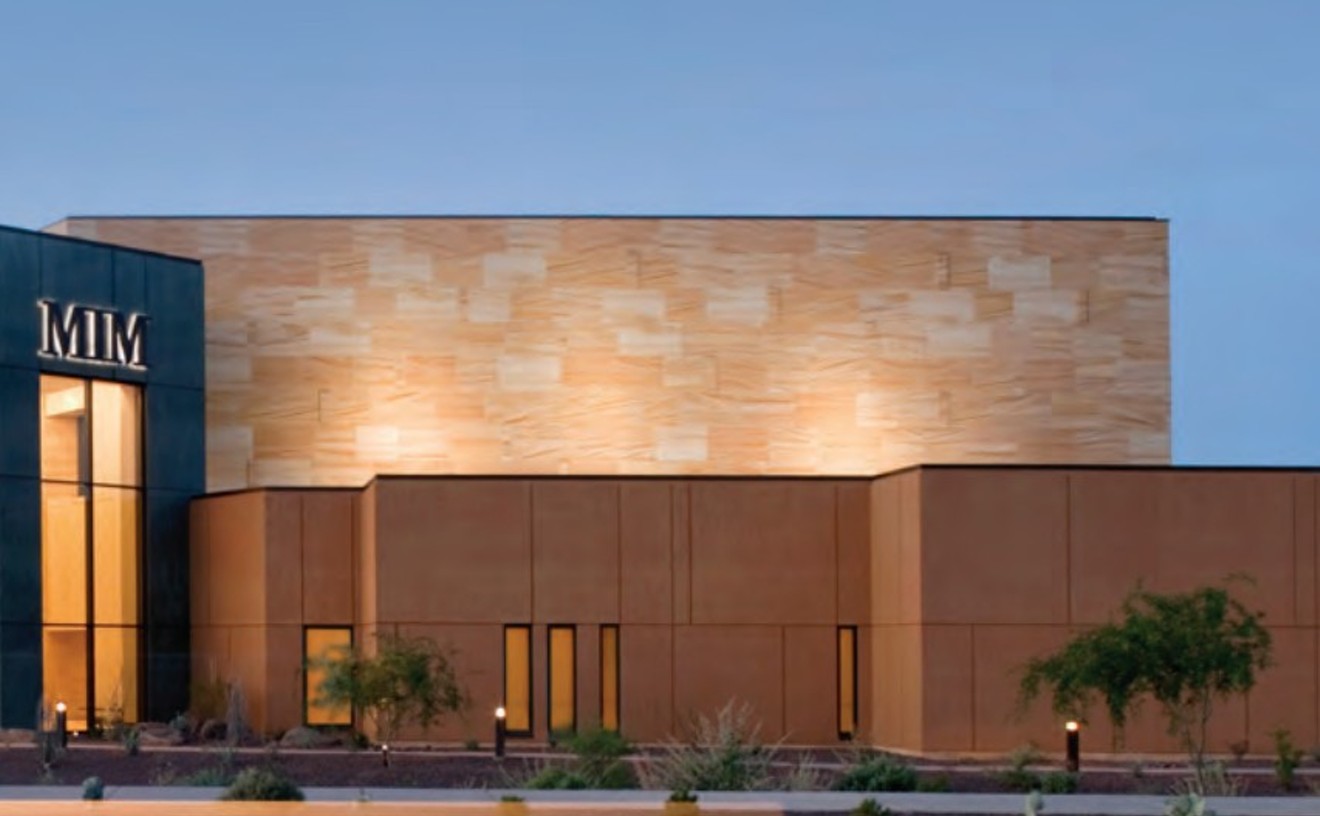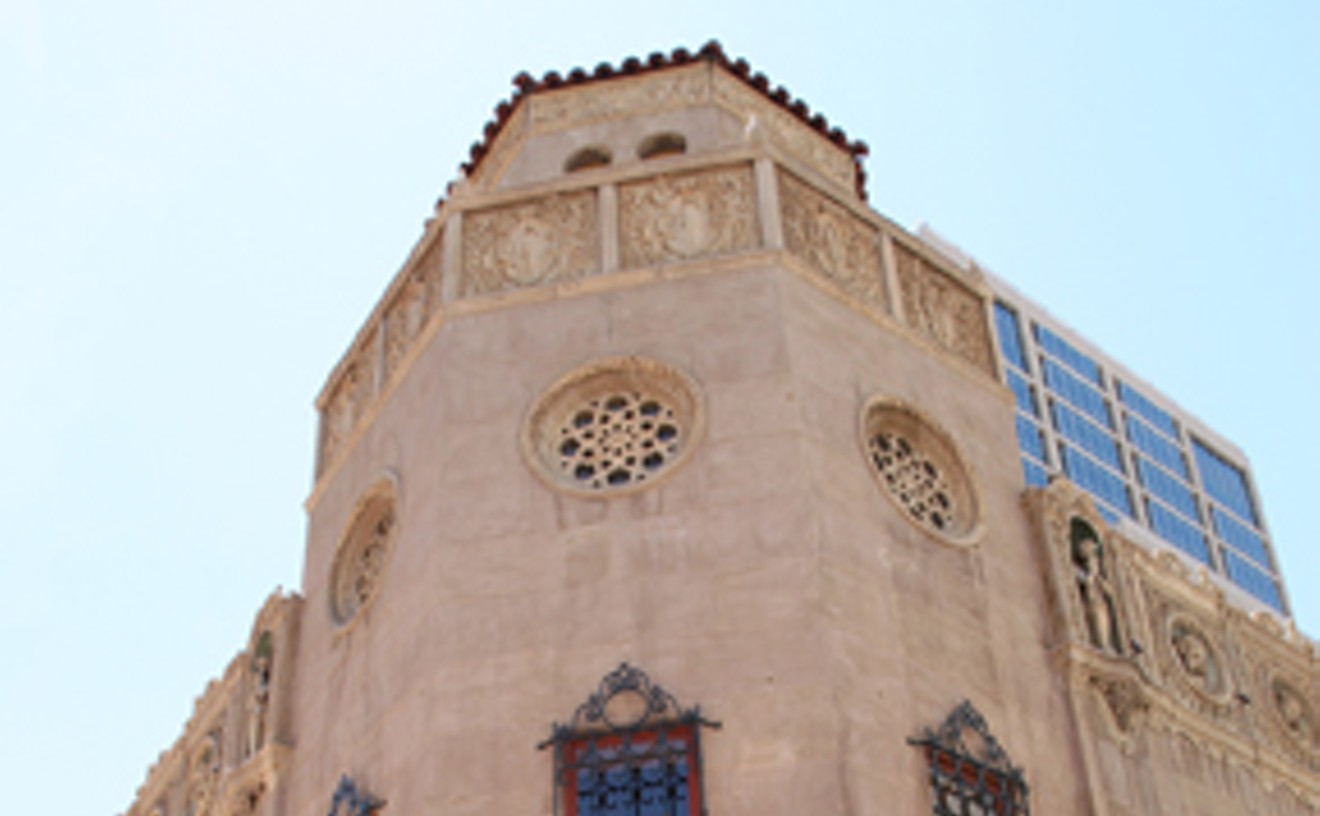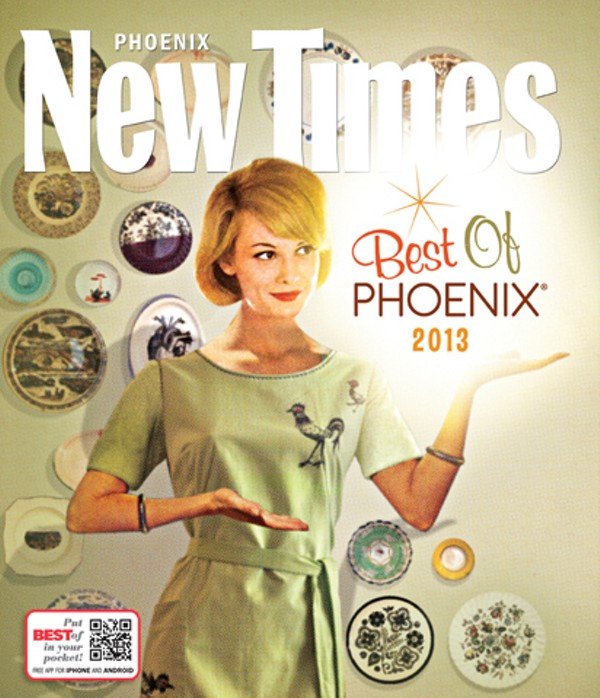When downtown Phoenix dwellers want a $5 martini and a good dose of history, the answer is simple — go to Hanny's. The former department store turned fire-testing facility turned Mad Men-style restaurant and cocktail lounge is the perfect example of developers' attempts to repurpose and resurface Phoenix's endangered historic buildings. Originally built and designed by architects Ryal Lescher and Leslie Mahoney in 1947, then later renovated by owner/developer Karl Kopp and commissioned by Janice Leonard, Hanny's holds a curious assortment of historic throwbacks and modern twists. There's the mezzanine floor, showcasing original signage from Hanny's dearly departed department store days, the upstairs level, which houses a cluster of former dressing rooms transformed into minimalist bathrooms, and, of course, there's the basement. Though the underground space is almost entirely gated off, unsuspecting visitors will be surprised to find a dimly lit table of baby dolls waiting for them just beyond the fence. Creepy? Maybe. Unexpected? You bet. But it's peculiar details like this that keep us coming back to Hanny's — well, that and the cocktails.
Best Vintage Downtown Building to Poke Your Head Into
Hanny's
Best Place to Find a Vintage Treasure
Arizona Room at Burton Barr Central Library

If you're headed to explore the Arizona Room at Burton Barr Library, we recommend you block out an afternoon (or two). The small cove inside the massive library in downtown Phoenix serves as a bank of local knowledge and history. The collection features maps, books, magazines, and newspaper clippings that explain Southwest culture — past and present. Be prepared to brush up on your local trivia, including facts and figures in art, the military, archaeology, transportation, environment, tourism, culture, and resources.
Among the Arizona Room collection's highlights: Phoenix aerial surveys taken as early as 1968, more than 1,200 biographies, correspondence from newspapermen and Rough Rider James H. McClintock, telephone directories, high school yearbooks, census data, Fort Verde records, Arizona Territory Interior Department appointment papers, Sanborn maps, and a vertical file of endless information stored in the back by subject and name. Told you you're going to need some time.
- 1221 N. Central Ave., Phoenix, 85004 Map
- 602-262-4636
- www.phoenixpubliclibrary.org
Best Place to See Vintage Music Memorabilia
Musical Instrument Museum

Phoenix is home to an innovative museum that has no comparison. Not only is there nothing like it in the United States, but the Musical Instrument Museum here even surpasses the one in Brussels that inspired it. The MIM has hundreds of instruments from every corner of the Earth, of course, with displays for more than 200 countries and territories, complete with listening samples. It also has a music theater and interactive room, where playing with the exhibits is encouraged, as well as music memorabilia from rock stars and other celebrity musicians from the past century or so. They have guitars played by Elvis Presley, an original theremin build by the inventor himself, and the piano played by John Lennon when he composed "Imagine." The Artist Gallery features a collection of customized microphones used onstage by singers like Rihanna, and there's even a marijuana-leaf-decorated mic used by Snoop Dogg. There are also displays for Arizonan music, such as tributes to locals who hit the big time, including Linda Rondstadt, Waylon Jennings, and Russell "Big Chief" Moore, a Pima Indian who played with Louis Armstrong.
- 4725 E. Mayo Blvd., Phoenix, 85050 Map
- 480-478-6000
- www.themim.org
Best AM Oldies Station
KAZG 1440 AM
We're not quite sure when all the FM oldies stations in town started venturing into the 1970s and '80s during airtime, but when we want to shimmy and shake to the classics, we skip over the FM dial and go right to 1440 AM. "Arizona Gold" captured our hearts with a selection of everything from classic oldie favorites like "Twist and Shout" and "Leader of the Pack" to more unique cuts like Jorgen Ingmann's "Apache" and The Kinks' "A Well Respected Man." Unlike the frequency modulated corporate-controlled stations, the AM station has a light fuzziness in the background, adding the same nostalgic feeling that the cracks and pops of a vinyl record carry. It also means fewer commercials to sit through in between your favorite jukebox jams. Plus, in the late afternoons during rush hour they play an awesome all-Hindi music show called Radio Sri.
Best Vintage Film Series
Silent Sundays

Downtown's Orpheum originally served as a silent movie house. Before its 1990s restoration, the Valley of the Sun Chapter of the American Theatre Organ Society raised funds to sponsor the installation of a huge Wurlitzer assembled from vintage parts. Occasions to hear this gorgeous monster in action are rare. One of our favorites is Silent Sundays, when a virtuoso organist plays accompaniment to an actual pre-talkie film. The acoustics are stunning, and many of the selections are the very same ones used by theater organists back when the films were released. (They kept notes.)
The screenings are sporadic at best (and the films VOTS-ATOS can afford to rent are sometimes a little weird), but the chapter accepts donations to help support the next Silent Sunday and hosts regular meetings and events featuring the Orpheum instrument and other great local organs, each one an entertainment experience like no other. So it's worth stalking the website.
- 203 W. Adams St., Phoenix, 85003 Map
- 602-534-5600
- orpheum-theater.com/orpheum_theater_phoenix.php
Best Vintage Dorm
Manzanita Hall
Sometimes, we drive by Gammage Auditorium, beautifully perched on the southwestern tip of ASU's Tempe campus, and wonder how long it will be till someone notices that the iconic theater has fallen into pale pink disrepair and tries to tear it down.
That won't be easy, given that Gammage was designed by Frank Lloyd Wright, but you know Phoenix — someday someone will try. That's why we were pleasantly surprised a couple of years back to learn that Manzanita Hall was being spared the wrecking ball.
Considering none of the reports on the hall's recent remodel list an architect — let alone a super-famous one — it's amazing the 1967 structure made it. But it did, and we're pleased, because after Gammage, it's ASU Tempe's most notable structure. It looks like it was built of Tinker Toys by a triangle-happy toddler, and by the time the remodel took place, residents were complaining that the place was stinky and rundown. No more. Late this summer, hundreds of lucky students moved into new swanky, LEED-certified digs. A good lesson in preservation.
- 100 E. University Dr., Tempe, 85281 Map
Best Vintage Arms
Arizona Military Museum

Don't know your M1895 "potato digger" from a Howitzer? Get the Bushmasters mixed up with the Rough Riders? Think the Buffalo Soldiers hunted buffalo? Then a trip to the Arizona Military History Museum may be in order. This award-winning museum, operated by the nonprofit Arizona National Guard Historical Society and run by the irascible and ever-knowledgeable retired U.S. Army Colonel Joe Abodeely, is located in Papago Park, in an adobe structure once used during WWII as a maintenance shop where German prisoners of war worked while being housed nearby. The museum follows Arizona's military history from the conquistadors and the Spanish Colonial Period to the U.S. Mexican War and on through to the Vietnam War and Operation Iraqi Freedom. And the many displays feature every sort of firearm, flag, and uniform imaginable, including a 19th-century belt-fed machine gun and a genuine "Huey" UH-1M Army combat helicopter flown in Vietnam. Entrance fee? Nada. Making the museum a helluva lot cheaper than a degree in military history from ASU.
- 5636 E. McDowell Rd., Phoenix, 85008 Map
- 602-267-2676
- www.azdema.gov/museum/index.html
Best FM Oldies Station
KOOL 94.5 FM
KOOL FM really cuts the crap, playing every good song released before 1990. Unless you have no heart, you can appreciate hearing The Cars followed by Cyndi Lauper followed by Rod Stewart, and you'll be singing along like an idiot as you swerve all over the 51. Even the officer who demands your license and registration might give you a pass. (Unless you're brown. Sorry, it's still Arizona.)
Many other so-called "oldies" stations just play what your stepdad wants to hear. With KOOL FM, there are no gimmicks, no bells and whistles, and nothing but the best tunes created since your grandma first drank a beer. Plus, they do a much better job than most representing ethnic, female, and queer perspectives; i.e., it's not just four white guys with guitars all the damn time. For a station that's so rooted in the past, it's refreshing that they've managed to stay so, well, KOOL.
Best Vintage Blog
Vintage Phoenix
Whether you're a visual learner, a bit of a history buff, or simply someone who wants to share old memories, you should be following Dave Driscoll's blog, Vintage Phoenix. Driscoll curates the crowd-sourced site with user-submitted historic photos of the Valley of the Sun, revealing what the metropolis once was. A quick scan of the page reveals shots of such iconic places as Turf Paradise and Mill Avenue, along with developing city streets and now-demolished hotels.
Fans are encouraged to add to the online collection by scanning their own original, unique images that are at least 25 years old and e-mailing them Driscoll's way with any available details. The sharing extends to the blog's comment section, where followers share experiences and recollections. Take a look. Chances are good you'll learn something about this ever-changing oasis' past.
Best Vintage Sign
The Diving Lady
The Diving Lady is the last of her kind. The famed neon sign was erected in 1960 to draw traveling folks to the Starlite Motel and its pool with a woman shown diving, in three animated stages, into a pool. In 2010, her continual high dives came to a halt (though the pool had been filled in long before) when a storm took down the three 10-foot ladies. With efforts from the Mesa Preservation Foundation and donations from the community that totaled more than $100,000, she was restored and took to the water again in April 2013. Take a drive through Mesa's main drag and check her out. She's the only operating animated neon sign in the Valley.
- 2710 E. Main St., Mesa, 85213 Map
- 480-964-2201






